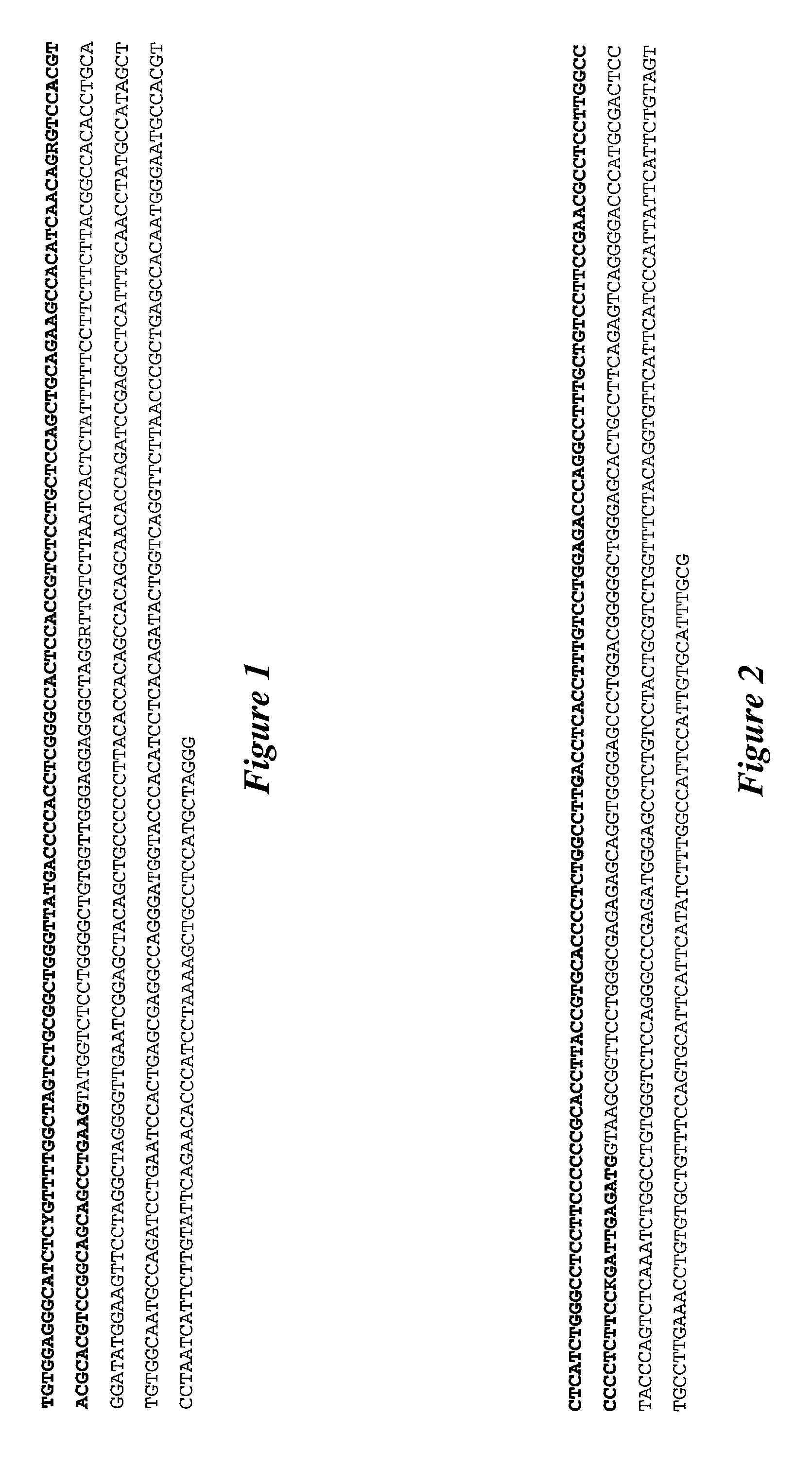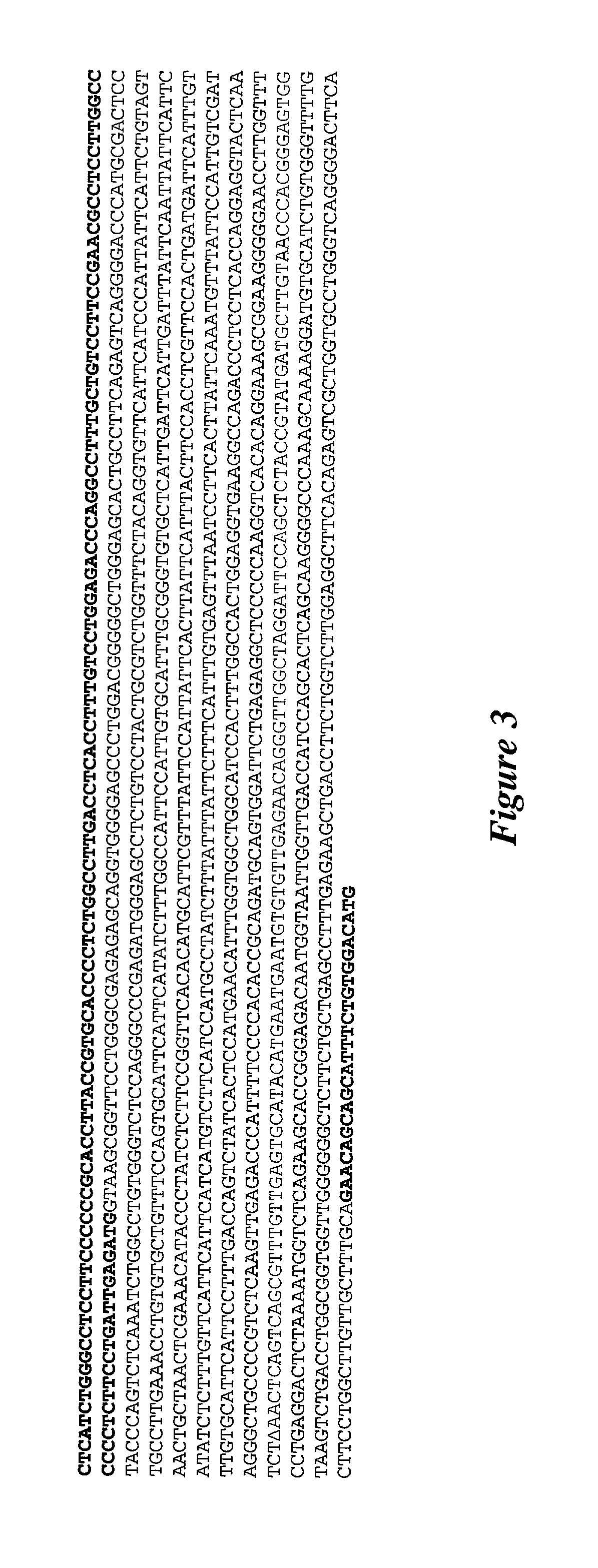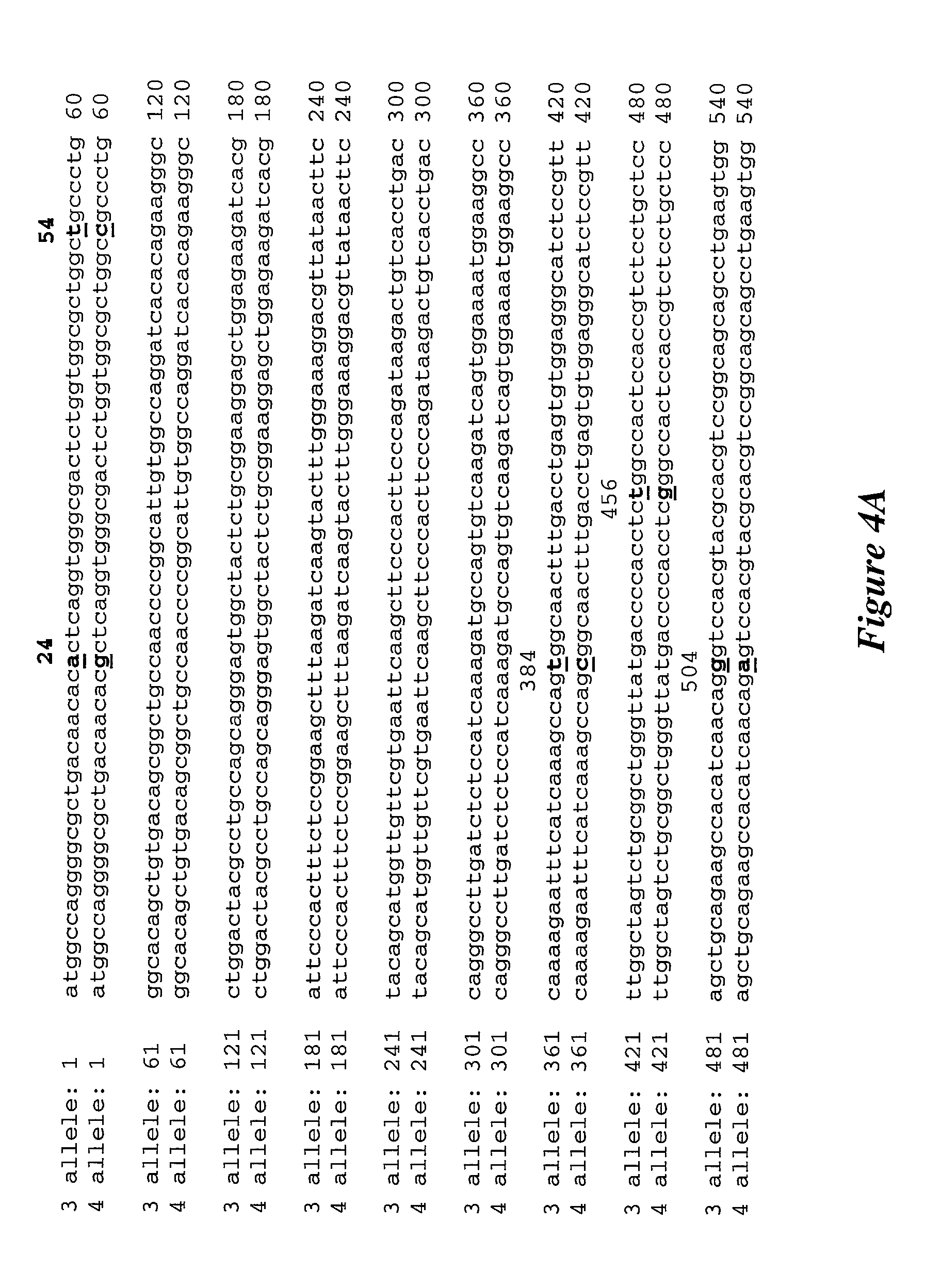Genetic markers for improved disease resistance in animals (BPI)
a technology of gene markers and disease resistance, applied in the field of genetic differences detection among animals, can solve the problem of low heritability of desired traits, and achieve the effect of improving disease resistan
- Summary
- Abstract
- Description
- Claims
- Application Information
AI Technical Summary
Benefits of technology
Problems solved by technology
Method used
Image
Examples
example 1
Bacterial Challenge and Association Testing
Summary
[0139]To test the marker assays to identify animals differing for innate immunity traits, two batches of animals were experimentally challenged with Salmonella cholerasuis and infection related measurements were taken post infection. Three different polymorphism tests at the BPI gene (BPI Ava II, BPI Hpa II, BPI-LP) were used to classify challenged animals, and all three assigned animals to classes which showed significant differences for innate immunity as shown by fecal shedding of bacteria at the end of the challenge (FMPND6). In many cases, additional traits related to the immune system such as: the number of neutrophils, monocytes or white blood cells at the end of the challenge; the difference in these cell numbers, as well as lymphocytes, at the beginning of the challenge versus the end were also statistically associated with specific BPI genotypes. The percentage of neutrophils or lymphocytes at either the beginning or end of...
example 2
Bacterial Challenge and Association testing
Summary
[0152]To further assess the utility of the marker tests to identify animals that differ in innate disease resistance, some BPI markers were tested on offspring of sires that were susceptible or resistant to Salmonellosis. The offspring were challenged orally with S. choleraesuis and infection and innate immunity related traits were measured. Association analyses revealed that potential effects of BPI genotype on bacterial load in liver and immune cell numbers and function. The presence of bacteria in internal organs demonstrates that the animal's immune system was unable to control spread of the infection. Reduced bacterial counts and lower fever in one genotype class are indicative of the heightened ability of those animals to control infection. These traits have economic value since fever and systemic infection decrease appetite and suppress growth and performance in a measurable way.
Experiment Description
[0153]Challenged pigs were...
PUM
| Property | Measurement | Unit |
|---|---|---|
| temperature | aaaaa | aaaaa |
| temperature | aaaaa | aaaaa |
| pH | aaaaa | aaaaa |
Abstract
Description
Claims
Application Information
 Login to View More
Login to View More - R&D
- Intellectual Property
- Life Sciences
- Materials
- Tech Scout
- Unparalleled Data Quality
- Higher Quality Content
- 60% Fewer Hallucinations
Browse by: Latest US Patents, China's latest patents, Technical Efficacy Thesaurus, Application Domain, Technology Topic, Popular Technical Reports.
© 2025 PatSnap. All rights reserved.Legal|Privacy policy|Modern Slavery Act Transparency Statement|Sitemap|About US| Contact US: help@patsnap.com



